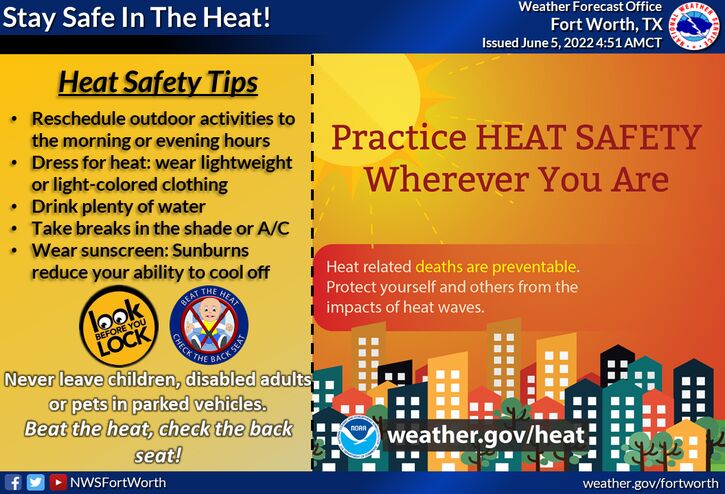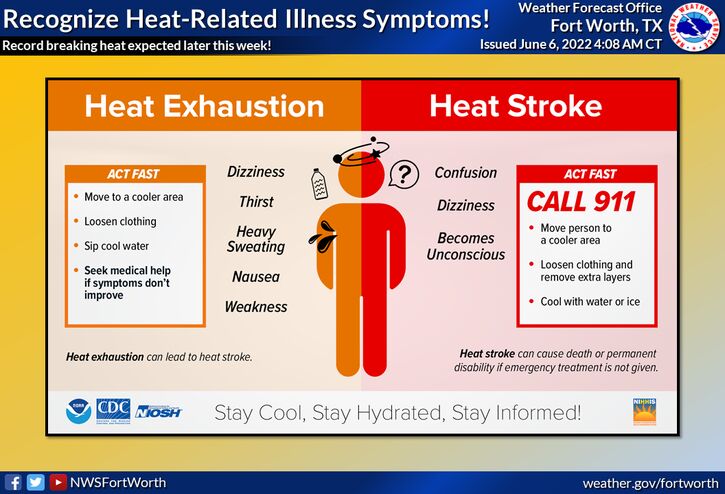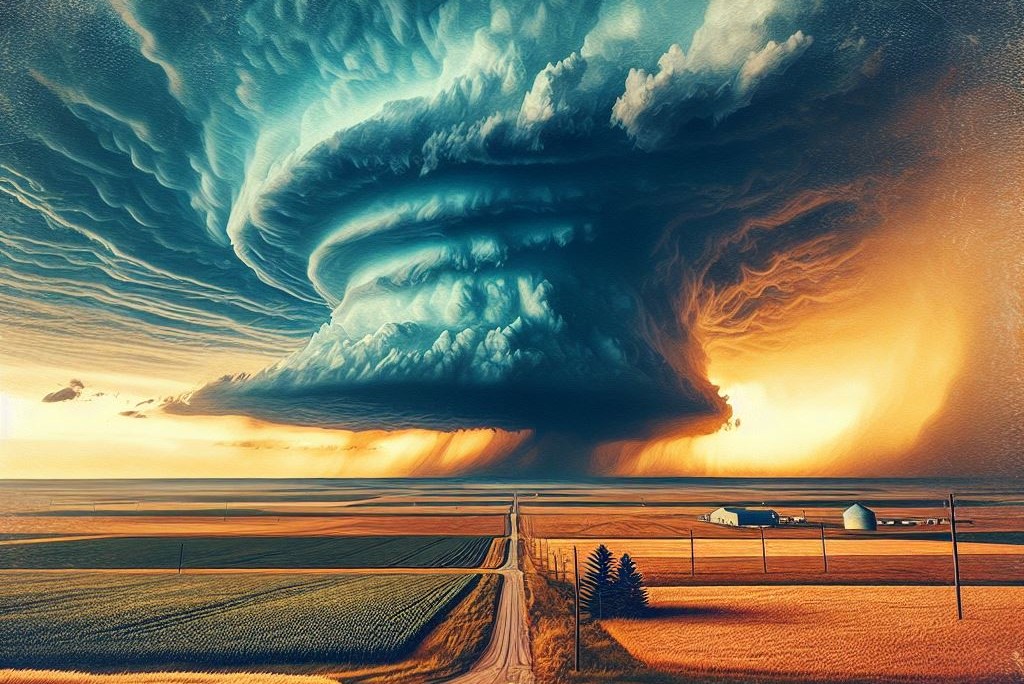
What Dangers Can Heat Present?
Extreme heat is one of the most underrated natural disasters in the world. This may come as a surprise but the leading cause of death by a natural disaster in the United States is extreme heat. Over 600 fatalities occur annually by heat stroke. Knowing the threat heat really is, the question now is; “What harm can heat inflict?”
Extreme heat occurs often around the US annually, especially in areas like the Great Plains (Texas, Oklahoma, New Mexico, Arizona, etc). Often when there is a risk for severe heat, the NWS (National Weather Service) will issue one of the following:
- Excessive Heat Warning—Take Action! An Excessive Heat Warning is issued within 12 hours of the onset of extremely dangerous heat conditions. The general rule of thumb for this Warning is when the maximum heat index temperature is expected to be 105° or higher for at least 2 days and night time air temperatures will not drop below 75°; however, these criteria vary across the country, especially for areas not used to extreme heat conditions. If you don’t take precautions immediately when conditions are extreme, you may become seriously ill or even die.
- Excessive Heat Watches—Be Prepared! Heat watches are issued when conditions are favorable for an excessive heat event in the next 24 to 72 hours. A Watch is used when the risk of a heat wave has increased but its occurrence and timing is still uncertain.
- Heat Advisory—Take Action! A Heat Advisory is issued within 12 hours of the onset of extremely dangerous heat conditions. The general rule of thumb for this Advisory is when the maximum heat index temperature is expected to be 100° or higher for at least 2 days, and night time air temperatures will not drop below 75°; however, these criteria vary across the country, especially for areas that are not used to dangerous heat conditions. Take precautions to avoid heat illness. If you don’t take precautions, you may become seriously ill or even die.
- Excessive Heat Outlooks—Be Aware! The outlooks are issued when the potential exists for an excessive heat event in the next 3-7 days. An Outlook provides information to those who need considerable lead-time to prepare for the event.
When Does Heat Present The Greatest Danger?
For Texas, heat consistently over the years presents its greatest threat between the the times of June 4th to September 18th. During this time, it is important to be aware of the danger heat can cause, how to prepare, and how to get through that season of heat safely.
Extreme Heat is classified as a period of 2-3 days where the temperature exceeds 90 degrees!
Fun Fact
How Do I Stay Safe? – Signs of Heat Illness
HEAT STROKE
- Signs:
- Extremely high body temperature (above 103 degrees F)
- Red, hot and dry skin with no sweat
- Rapid, strong pulse
- Dizziness, confusion or unconsciousness
If you suspect heat stroke, call 9-1-1 or get the person to a hospital immediately. Cool down with whatever methods are available until medical help arrives. Do not give the person anything to drink.
HEAT CRAMPS
- Signs:
- Muscle pains or spasms in the stomach, arms or legs
- cramping in the abdomen
HEAT EXHAUSTION
- Signs: Heavy sweating, paleness, muscle cramps, tiredness, weakness, fast or weak pulse, dizziness, headache, fainting, nausea, vomiting
If you have signs of heat cramps or heat exhaustion, get to a colder space and rest while nursing on water. Don’t move too much or overexert your body until symptoms fade.
How Do I Stay Safe? – How to prevent heat illness
- Don’t spend too much time outside in extreme heat
- Don’t go places unless you bring plenty of water
- Don’t leave anyone unattended in a vehicle that is turned off. High temperatures can occur inside a vehicle.
- Wear proper clothing outside. Wear light clothing, no dark colors
- Apply sunscreen. Sunburns make heat illness more likely.


Resources
- https://www.ready.gov/heat#illness
- https://www.weather.gov/safety/heat-children-pets
- https://www.weather.gov/safety/heat-illness

Learn More Weather 101!
Types of Weather Section was made to inform viewers about all forms of severe weather that may be experienced or discussed about in WC posts! Here you can become weather aware and feel more prepared for severe weather! Each section includes details, graphics, videos, and resources to help the reader fully grasp the information given to them. Read more today!
[jp_post_view]